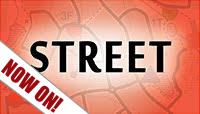NOY2: POST-EVENT REPORT
You would be hard pressed to find a better day to have seen the Butterwick Crown Reserve than Sunday 6th May, 2018. Beautiful mild, sunny conditions – perfect orienteering weather. Over 90 entrants enjoyed the conditions to experience an area not previously used for orienteering.
Rob Bennett’s blistering 50:58 time on the 7.0 km Hard Long (edging out Justin Stafford by the smallest of margins) suggested fast, open running conditions. Which is true – in part. The trick was not getting tangled in any green along the way, of which there was plenty. Although a few entrants returned bearing the scars of battle, most seemed to have enjoyed the experience. And many felt better upon administration of a chilled beverage and an egg & bacon roll or a sausage sandwich. Apparently, Peter Newton ended up feeling REALLY good – and he didn’t even run a course!
Thank you to those who took time to provide constructive feedback about the map. While updating an existing map is not too threatening an activity, starting one from scratch offers somewhat different and more complex challenges. Will everyone else see what I’m seeing – and the way I’m seeing it? And just how should that be put onto paper? The verdict amongst those I spoke with was that the “Rough Open with Scattered Trees” areas did not really benefit competitors, as the distinction between that and “Open Forest” was not sufficiently clear in the forest itself. Future versions of the map are unlikely to have a lot of yellow on them (sorry, Justin). Maybe if OCAD had a way that you could gradually fade in the colour at the edges of an area... But I enjoyed the experience, learnt a lot from it and am glad that people thought the area was worth mapping.
As always, there were others who pitched in to make it all happen. Peter Newton took on the (often thankless) task of vetting, offered helpful suggestions, set up, packed up and drove the gear van. And it is worth remembering that had it not been for a chat between Peter and Russell Rigby (the master of the base map), this area might still be “undiscovered”. Joy Guy was stalwart, as ever, on the desk, then took time to help collect controls. Jeff Guy coped with an error in the course files that were on the computer, as well as 2 malfunctioning SI units, while manning the finish. Geoff Todkill deserves thanks for the printing, Geoff Peel & Margaret Peel for the string course. Rudi Landsiedel, Denis Lyons and Rob Vincent also went back out to gather in controls, signs and streamers. I was otherwise occupied during the setting up, so apart from Carolyn Chalmers, I’m not sure who helped, but thank you nonetheless. If I have missed you or forgotten a job, please accept my apologies. Of course, thanks are also due to the members of the Hinton Wallalong Pony Club for use of their facilities. Emma and her team provided some wonderful catering - and the very sociable atmosphere that goes with the food & drink. They look forward to seeing us next year. I trust we look forward to seeing them!
Finally, a request. Please take time to post your route on RouteGadget (just follow the link). It doesn’t have to be pinpoint precise and I promise no-one will laugh if you took what I might call “an unconventional route choice”. (Trust me – we have all been there at some stage!) It is easy to do it manually – just tick the “Draw Your Route” box (top right of the screen), select your course and name, then click on the start triangle. Every time you click, it adds another point and joins it up to previous points to show where you ran. Those with GPS units will probably have a rough idea how to load a .gpx track using the “GPS upload” link instead.
“But, why?” I don’t hear you ask. (I’ve got the speakers off.) I find it helps, as a course planner, seeing how people approach some legs. In my head, I have an “ideal” solution, but other orienteers sometimes see good ways of doing things that have never occurred to me. Understanding how people think while on a course helps to design better courses. And you might just get something from seeing how others compete. Give it a go!
David.
From Newcastle/Sydney: The simplest approach is to take the A1 to Raymond Terrace, turning left at the large roundabout at Heatherbrae. Follow the Old Pacific Highway (Adelaide Street) through the town, turning left into William Bailey Street at the McDonalds traffic lights. Proceed straight ahead through the roundabout (becomes Seaham Road) and onto the bridge. From the river, it is approx. 7.2 km before turning left into Brandy Hill Drive. Follow this to the end (stop sign) and turn left again, then after 4.3 km turn right into Butterwick Road. After 2.4 km, turn right into Green Wattle Creek Road. Follow this road (mostly unsealed) for 1.2 km. (Your GPS unit may offer a variety of alternative ways to get there, depending on your origin.)
From Maitland: Leave Maitland through Lorn and Bolwarra, following Paterson Road through Bolwarra Heights and on to Woodville (becomes Clarence Town Road). Continue straight ahead for 3.1 km after the Woodville Store and turn left into Butterwick Road. After 2.4 km, turn right into Green Wattle Creek Road. Follow this road (mostly unsealed) for 1.2 km.
From East Maitland: Alternatively, you can travel through Morpeth, over the bridge and turn right, then over the Hinton bridge and turn left, then drive through Wallalong up to the stop sign on Clarence Town Road. Turn left and proceed for 700 m, then right into Butterwick Road. After 2.4 km, turn right into Green Wattle Creek Road. Follow this road (mostly unsealed) for 1.2 km.
Parking: 90 degrees, on both sides of the car park.
Map: Green Wattle Creek, 1:7 500, 2018. New map! (New mapper!)
Terrain:
Planner: David Kitchener
Vetter: Peter Newton
Courses: Standard range of NOY courses. Details available closer to the event.
| Course | Length(km) | Controls | Climb (m) | |||
| Very easy | 1.9 | 10 | 20 | |||
| Easy | 2.4 | 12 | 30 | |||
| Moderate short | 2.5 | 14 | 40 | |||
| Moderate long | 3.3 | 17 | 50 | |||
| Hard short | 3.4 | 18 | 50 | |||
| Hard medium | 4.9 | 20 | 70 | |||
| Hard long | 7.0 | 24 | 95 |
Facilitities: Toilets & CATERING (no, that’s not a misprint). The kind people at the Hinton Wallalong Pony Club have agreed, not only to provide us with toilet access, but to open up the canteen to feed and water us from about 10 am. They plan to offer sausage sandwiches, bacon and egg sandwiches, cakes, tea and coffee and cold water and soft drinks. Being a smallish club (a bit like orienteers), they will be very grateful for your support.
Safety: The area is largely free of trail bikes, 4WD vehicles, rubbish piles, cliffs, deep erosions, wombat holes and mine subsidence. There are, however, some sections of old cattle fence which are not always easy to see in the field. Generally, courses will attempt to avoid them, but be alert to their presence wherever they are marked on the map.
Start times: 9:30 to 11:30am with course closure at 1pm. Please ensure you start your course with enough time to complete it prior to course closure
Terrain: Largely undulating with scattered tree root and termite mounds, a modest track network, plus a few detailed watercourses, but little rock. Vegetation ranges from very open to extremely thick (see notes).
Notes: The event area is the Butterwick Crown Reserve, a former travelling stock reserve. Vegetation is truly at both ends of the scale – some really lovely open running that is almost park-like, contrasting with some that is diabolically thick and scratchy (lantana & thorn bush). Needless to say, vegetation feasibility will play a part in determining route choice for the harder courses. Full body cover would be advisable. Even considering the areas of thicker vegetation, we should see some fairly fast times recorded.
...And as if a new map, new area, toilets and catering weren’t enough to get you there, there’s the novelty of getting to critique a novice mapper’s work. There’s quite a bit that could be said about the experiences of the first-time mapper, but we might be best to save that until after the event. A few thoughts, however:
> The area is (almost) entirely fenced externally (but not internally), so there should be no need to cross anything resembling a working fence.
> It is fair to say that I haven't rifled exhaustively through every last thicket. I figure that the thick stuff is useless for placing controls - and anyone who does go in there will be worried about much more than an unmapped tree root mound. But I do look forward to hearing about your experience, upon your return.
> The distinction between "rough open with scattered trees" (yellow with white dots) and "fast running" (white) is a fairly arbitrary one. On the whole, ROwST will be sparser trees with little scrubby undergrowth and good grass cover on the ground, while fast run is a little more heavily wooded, a bit more undergrowth and less/shorter grass. Hopefully it makes sense when you see it. That said, all vegetation feasibilities are a bit arbitrary anyway. The same area can look different from opposite sides. Hopefully I've been reasonably consistent.
> Some undergrowth (up to about 60 cm) isn't mapped, mostly in patches too small to show up properly with a stripe symbol, in which case you can run around it anyway. If there’s enough of it to slightly impede running, then it's mapped with green stripe. If it really impedes running, it’s classed as regular "slow run" (light green). Isolated lantana thickets of one or two smallish plants are generally not mapped. (Too many!)
> Survey pegs and trackside guide posts are not mapped, nor are isolated star pickets, unless they still have wire on them or are part of a row of star pickets. Isolated wooden fence posts are mapped, as long as they are clearly an ex-fence. Be warned – there are about 5000 tree stumps out there that look like an ex-fence post, but only a few on the map.
> Mounds, termite mounds and tree root mounds over 30 cm (1 foot, oldspeak) are mapped, anything under 30 cm isn’t. Meat-ant nests, bull-ant nests and tree roots without soil are not mapped, nor are a lot of small, shallow depressions that are too insignificant to justify a spot on the map.
> Although the watercourses are often surrounded by horrible thick stuff, many have a shallow, grassy floor and can be surprisingly navigable (lengthways), although that can vary depending on whether there has been recent rainfall (and how much). Harder courses may find this information helpful at some point.
> I would advise you resist the temptation to test the depth of the (numerous) waterholes. The deepest I found was almost 4 metres, so I would advise that if it has been raining and you can't actually see the bottom, it may be very much safer to run around it. Older members of Anglo-Saxon descent may recall the sad tale of Dr Foster, who went to Gloucester. (If this makes no sense at all to you, I'm happy to explain on the day.)
> Remember, you all get the same map. It’s what you make of it...!





